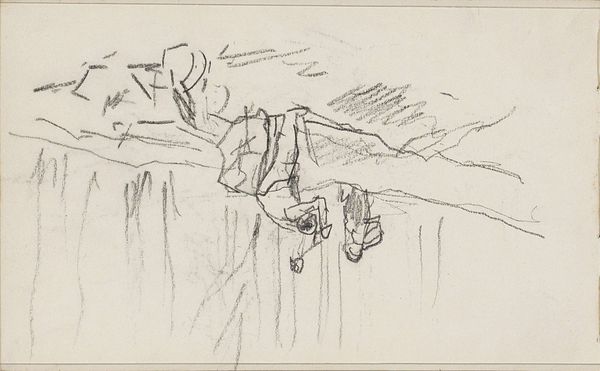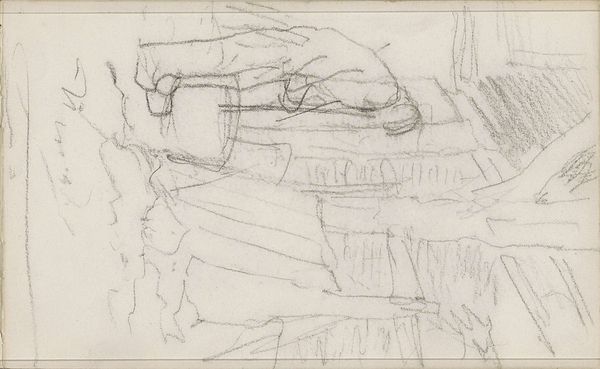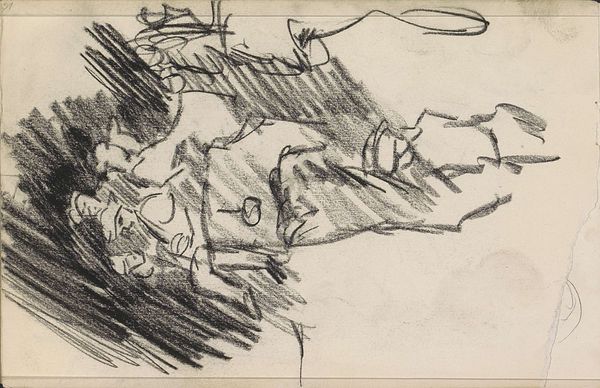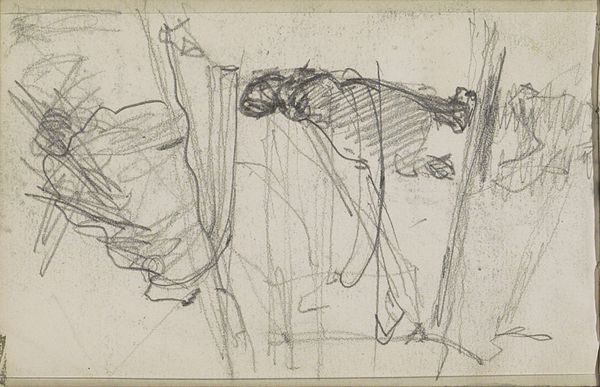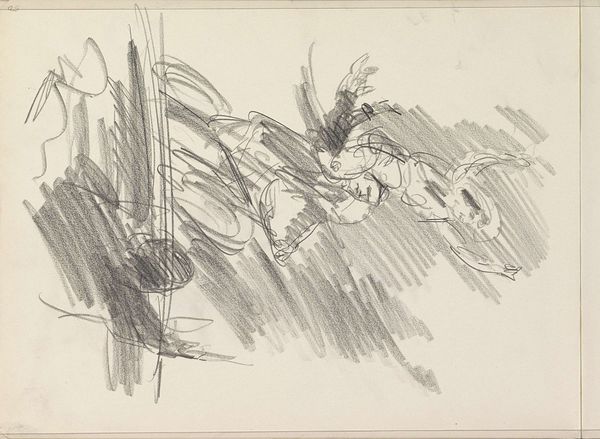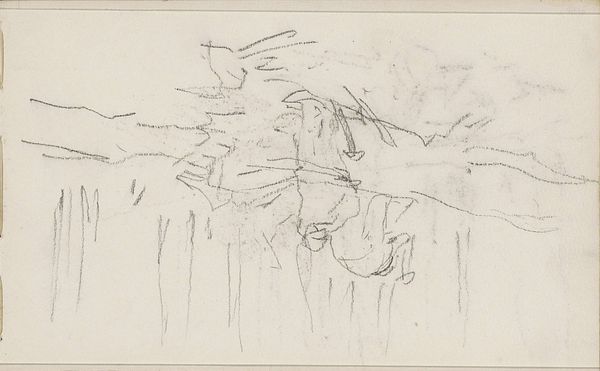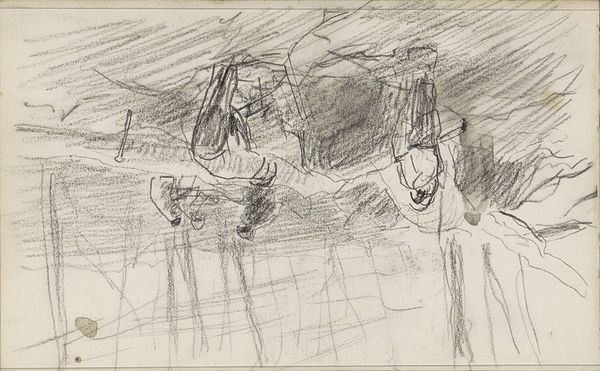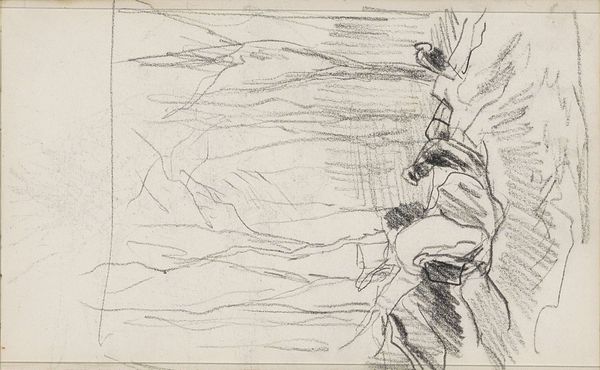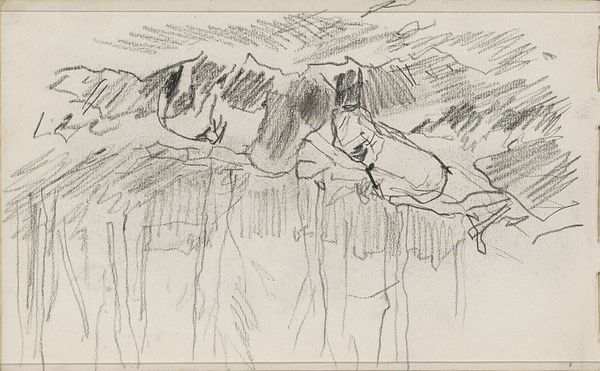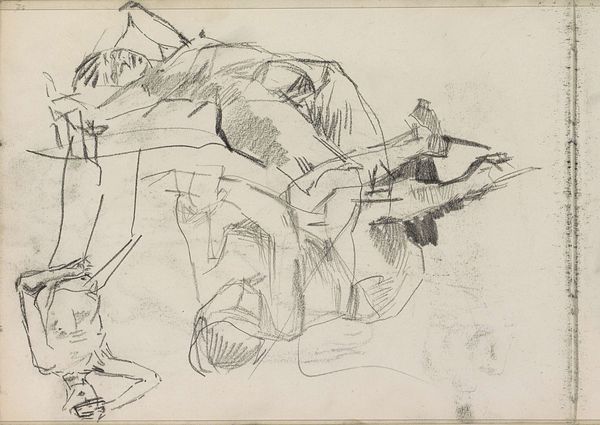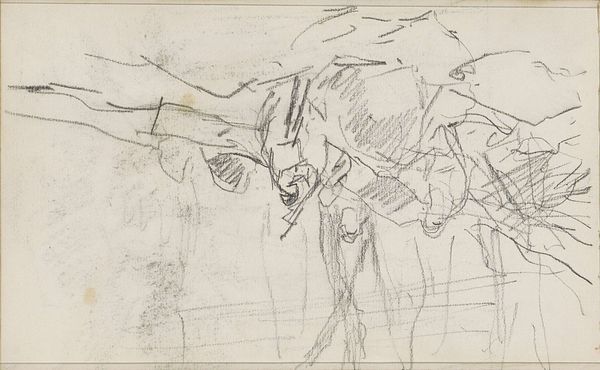
drawing, pencil
#
drawing
#
landscape
#
pencil
#
realism
Copyright: Rijks Museum: Open Domain
Curator: Here we have "Woodcutters at a Felled Tree Trunk" by Anton Mauve. It’s a pencil drawing that resides here at the Rijksmuseum, believed to have been created sometime between 1848 and 1888. Editor: There's such a stark feeling of labour radiating from this drawing, wouldn’t you say? I feel the weight of their effort pressing down. Curator: Absolutely. Considering Mauve’s roots in the Hague School, the Realist tradition, and its focus on the working class, we can begin to interpret it through a lens of early industrial shifts and socioeconomic dynamics of that era. It highlights the toils of labour amid changing landscapes. Editor: Yes! It's also Mauve's sensitive pencil work. You can almost feel the grain of the paper—rough like bark against skin. Did artists back then recognize how beautiful such a seemingly mundane moment could be? There's an elemental grace here, the bend of backs, the quiet hum of saw against wood... Curator: The focus wasn't always just on celebrating beauty in conventional terms, more often, it served to provide critical perspectives on the very structures dictating societal expectations of work and progress. What power dynamics are implicit within this industry? Editor: That's true. So many implications. It makes you consider, where does necessity stop, and where does environmental impact start? Curator: Exactly. Considering the legacy of colonialism embedded within art histories globally, how might extraction affect people and the landscape? Editor: The drawing almost has an unfinished feel, right? A glimpse into an ordinary world—real, honest work being done. It’s nice, and grounding too. Curator: And it serves as a prompt to think about histories of labour and representation critically. Art often becomes the ground upon which many histories of power are expressed. Editor: Such simple lines—such complex stories! A single drawing transforms into this grand consideration of work, nature, and maybe the start of thinking about ethical approaches to our environment. Curator: Indeed, art invites us to see, question, and act, within our own contexts today.
Comments
No comments
Be the first to comment and join the conversation on the ultimate creative platform.
